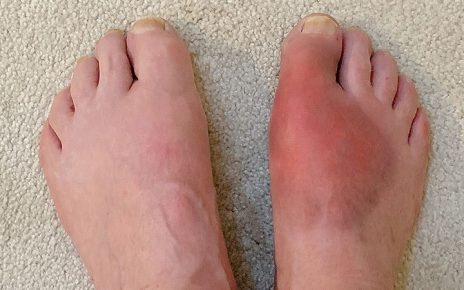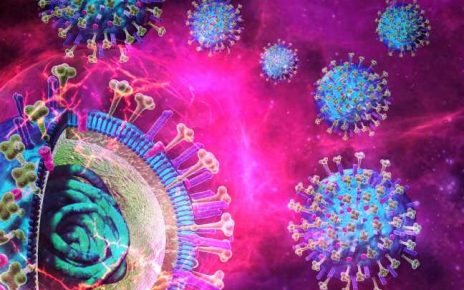Editor’s note: Find the latest COVID-19 news and guidance in Medscape’s Coronavirus Resource Center.
Tapio Schneider is a climate scientist, and his wife a mechanical engineer. In many ways, they were like many other families affected by COVID: two young kids out of school and endless Zoom meetings from home. But the two weren’t just making sourdough bread and taking walks during lockdown: They were brainstorming how they could use their expertise to help.
“We were holed up at home like everyone else, talking about how isolation or lockdowns might be avoided,” recalls Schneider, a professor of environmental science and engineering at the California Institute of Technology and a senior research scientist at NASA’s Jet Propulsion Laboratory.
At the time, lockdowns were the only known way to control the virus, but Schneider felt they didn’t work well.
“Even at the height of the pandemic, 1 or 2% of the population was actually infectious,” he says. “Ninety-eight percent wouldn’t need to isolate.” But the problem was figuring out who those infectious people were.
Then it hit him: What if he could create a COVID “forecast” using the same technology that weather apps use?
Schneider’s wife, who is also a Caltech professor, was studying body temperature sensors. Perhaps, they reasoned, data from similar devices could be combined with COVID testing data to predict a person’s chances of getting the virus. Send that data to an app, and each user could get their own personalized risk delivered right to their smartphone.
That seed of an idea became a study in PLOS Computational Biology. Schneider partnered with a global team – including a computational scientist from Germany and a disease modeler from Columbia University in New York City – to find out whether an app like this could help control a pandemic like COVID. And the results are promising.
How a COVID Forecasting App Works
If you’ve ever used a weather app, you’ve probably noticed that the weekend forecast can look very different on Monday vs. Friday. And that’s not because the meteorologists don’t know what they’re doing: It’s a reflection of the vast glut of data that’s constantly being imported, increasing the forecast’s accuracy as the actual date nears.
Every 12 hours, weather apps run an analysis. The first step captures the atmospheric state right now – things like temperature, humidity, and wind speed, as measured by sources like weather stations and satellites. This information is blended with the forecast from 12 hours earlier, and then plugged into an atmospheric model. An algorithm predicts what conditions will be like in another 12 hours, the weather app updates, and half a day later, the cycle repeats.
Imagine an app that uses a similar method, except it plugs COVID data into a disease-tracking model, charting the path from at-risk, to exposed, to infectious, and finally to recovered, hospitalized, or deceased. The data would include the obvious – results from rapid tests and antigen tests, self-reported symptoms – along with the more unexpected, like data from smartphones and the amount of virus in local wastewater, which is rapidly becoming a valuable tool for predicting COVID outbreaks.
“The key is that this is specific to individuals,” explains Schneider. The app wouldn’t just predict the percentage of people in your city who are infected; rather, it would assess your unique risk for having the virus, based on the data your Bluetooth-enabled device picks up.
Existing exposure-notification apps, which are used more widely in Europe and Asia than in the U.S., ping you after you may have been exposed to the virus, but they don’t update you between alerts. Schneider imagines using the data those apps use in a more efficient way, drawing on other data sources, providing a regularly updated infectiousness forecast, and advising you to self-isolate after a likely exposure.
How Effective Would the App Be?
In the study, Schneider and his team created a simulation city, designed to mimic New York City during the pandemic’s early stages. This web of data included thousands of intersecting points, each representing a person – some with many daily interactions, others with few. Each was assigned an age because age impacts the route that COVID takes.
What their simulations revealed: If 75% of people used a COVID-forecasting app and self-isolated as recommended, the pandemic could be effectively controlled – as long as diagnostic testing rates are high.
“It’s just as effective as a lockdown, except that at any given time, only a small fraction of the population isolates,” says Schneider, noting that in this case, a “small fraction” is around 10% of the population. “Most people could go about their life normally.”
But as sluggish COVID vaccination rates have revealed, near-universal compliance might be a goal that can’t be reached.
Another potential challenge: overcoming privacy concerns, even though the data would be anonymized. Starting with smaller communities, like college campuses or workplaces, might promote more widespread acceptance, says Schneider, as people see the benefit of sharing their data. Younger people, he observes, seem more comfortable with disclosing health information, meaning they may be more willing to use such an app, especially if it could ward off another lockdown.
The Future of Infectious Disease Tracking: Empowering Each Person
Mathematical modeling for infectious diseases is nothing new. In 2009, during the H1N1 (swine flu) pandemic, the CDC used data from multiple sources to help slow the flu’s spread. During the Zika surge from 2016 to 2017, modeling helped researchers identify the link between the virus and microcephaly, or a condition where a baby’s head is much smaller than normal, early on. In fact, mathematical forecasting has been useful for everything from the flu to HIV, according to a 2022 journal article in Clinical Infectious Diseases.
Then came COVID-19 – the worst pandemic in U.S. history, demanding a new level of number-crunching.
In partnership with the University of Massachusetts at Amherst, the CDC created The Hub, a data repository that merged several independent forecasts to predict COVID cases, hospitalizations, and deaths. This massive undertaking not only helped inform public policy – it also revealed the importance of quick contact tracing: If identifying close contacts took more than 6.5 days after exposure, it was pretty much useless.
Schneider echoes this concern with what was once lauded as the method for COVID control. In his team’s simulations of app-based forecasting, “you reduce death rates by somewhere between a factor of 2 to 4, just because you identify more people who are likely infectious than you would by testing, tracing, and isolation,” he says. Contact tracing is limited in its ability to control the spread of COVID, due to the high rate of transmission without symptoms and the virus’s short latent period. By combining multiple data sources with a model of disease transmission, you get more efficient.
“You know how it spreads over the network,” says Schneider. “And once you build that in, you get more effective control of the epidemic.”
Applying this mathematical approach to individuals – rather than entire populations – is the true innovation in Schneider’s vision. In the past, we could predict, say, the chance of finding an infectious person in all of New York City. But the app Schneider hopes to develop would determine the unique chance of infectiousness for every user. That puts the power to make informed decisions – Do I go out tonight? Do I self-isolate? – more squarely in everyone’s hands.
“We have a technology here that can lead to management of epidemics, even tamping them down altogether, if it’s widely enough adopted and combined with testing,” says Schneider, “and that’s just as effective as our lockdowns, without having to isolate much of the population.”
This innovation could help track infectious diseases like the flu or even curb the next COVID, Schneider says.
“You want to control epidemics, you want to minimize disease and suffering,” he says. “At the same time, you want to minimize economic disruption and disruption to life, to schooling. The hope is that with digital means like the ones we outlined, you can achieve these two aims.”
SOURCES:
Tapio Schneider, PhD, professor of environmental science and engineering, California Institute of Technology; senior research scientist, NASA’s Jet Propulsion Laboratory.
PLOS Computational Biology: “Epidemic management and control through risk-dependent individual contact interventions.”
Source: Read Full Article



